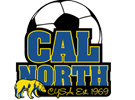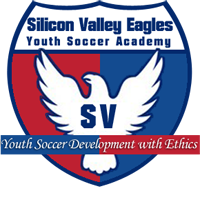Silicon Valley Eagles
The Silicon Valley Eagles Soccer Academy blog is a great source of soccer coaching tips, parents and players improvement tips and advises, and updates on the soccer world news.
Coaching Youth Soccer by teaching progressions
- Font size: Larger Smaller
- Hits: 4238
- Subscribe to this entry
- Bookmark
 The biggest mistakes I see from youth soccer coaches, whether they be parent, or worse, they are paid to coach, is the failure to follow teaching progressions and failure to communicate with youth players. Coaches that teach complex ideas using foreign soccer jargon to 8-12 year old “competitive” soccer players waste time. It also waste an opportunity to teach. Why do we do it?
The biggest mistakes I see from youth soccer coaches, whether they be parent, or worse, they are paid to coach, is the failure to follow teaching progressions and failure to communicate with youth players. Coaches that teach complex ideas using foreign soccer jargon to 8-12 year old “competitive” soccer players waste time. It also waste an opportunity to teach. Why do we do it?
1. The biggest reasons coaches fail here is that they have not properly identified the problem. This comes from two main reasons: (a) the failure of the coach to give the team and players her focus and attention, and (b) lack of experience. If you cannot see the problem, then you cannot correct it. Failing to identify means coaches miss the boat on what to teach. Identifying the issues requires focus and effort — even though it is mental effort. It is taxing. It is work. It means not talking on your cell phone during a session. It means thinking about each of your players and how you can help them.
Lack of experience is a problem because a coach’s inexperience with youth players, regardless of the level the coach played at, can make it hard to identify and communicate with younger players. This is particularly true if the coach does not have kids.
2. Coaches use the wrong vocabulary. Besides identification, communication is essential. If you are using the wrong words, phrases, or actions, at the wrong time, you are failing to communicate. Using soccer phrases that sound good and make you look smart are not helpful if the players do not understand them.
Like in the Courtroom
When a lawyer wants to offer a piece of evidence in a trial, he has to “lay the foundation” for the evidence. There are a series of facts that must be developed to make sure the evidence is trustworthy. If you skip the foundational steps, the evidence will not be admitted. So, before you offer a piece of evidence, you have to go through the predicate questions for the piece of evidence. Only once those are completed can you ask the Court — “Your Honor, we move for Exhibit A to be admitted.” If you have failed to go through the proper predicates, there will be an objection that is sustained and your evidence will not be admitted. You cannot skip steps. Coaching soccer, to me, is much the same. You have to lay a proper foundation of knowledge and language with players before you can expect the players to understand more advanced concepts of the game.
Roadbuilding?
OK…so you do not like the evidence example. Let me try another analogy that I know less about — road building. I purchased a home some time ago with a long private driveway. The prior owner paid to have the long driveway paved. However, shortcuts were taken in the preparations for the asphalt. The quality of the dirt as a base was poor; there was not enough lime; etc., etc. My understanding after the fact is that all of these factors had to be met for the road to last in usable form. So, the road looked great initially and performed well for a short time. But, over time, the shortcuts taken in the foundation of the road’s inadequacies became apparent to all. Such is the case with soccer players — if we fast forward through the foundation issues — maybe solving problems for players, making ourselves look good (and even winning games) — what we may be seeing is fool’s gold. And, while it may look good at first, pot holes may surface later when those players are on a different team with a different coach.
Examples of Foundation/Communication Issues in Coaching Soccer regarding Off the Ball Movement
1. Problem: players do not move into space to be a passing option when your team has the ball. Solution: proper off the ball movement.
Phrases that are not helpful, if it is not explained to them properly before the practice:
a. “Spread Out.” Lacks direction; not specific enough; vague. you have to explain the word to the young players.
b. “it is more important where you go when you don’t have the ball than what you do with the ball” Not helpful – not instructive – not specific – I unfortunately have said this a lot. This is just a coach wanting to hear himself speak.
c. “Get open” vague; not specific; no orientation principle; not helpful.
d. “Lose your marker.” Could be good if you have taken the time to explain what a “marker” is.
e. “Get away from each other.” Not helpful; usually mean-spirited; not specific; vague; negative coaching.
f. “On offense we want to make the field as big as possible.” Vague; lecturing; coach hearing himself speak. This is another one I have said a lot.
g. “Play wider.” Vague; joysticking — don’t give them the answers (even if it is the answer you want them to have).
h. “Hit the early pass” Vague; joysticking; not specific. While passing early is a great idea, and one that can make a coach look good, at the ages outlined above, it is not necessarily the best thing to tell a player from the sideline. Ask a 9-year-old: “What is an early pass? An early cross?” See what kind of response you get. Let them decide when to pass – do not tell them.
i. “Play it to so-and-so” or “Pass it to so-and-so.” Please stop. You are harming your players. Yes, you can make all the decisions for your U9 team from the sidelines and your team can dominate and look great. But you are not helping them. We call this joysticking and remote control. You have to let them make the decision.
j. (To the wide players) “Get to the line.” Great – you have an orientation point – that is helpful. I have used this a lot. The concept can be effective and helpful – but are there ways we can get them to come to this answer without us giving it to them?
Quit trying to impress the parents or kids with your soccer expressions. Coaches that spend time with lots of these “look what I know statements” are usually wanting people to hear their ideas and how much they know rather than trying to help the players get better. Focus instead — how can you get through to your players? How can you help them learn? Here are some I have learned (and I am learning all the time).
Phrases that are better:
a. “Can you find space when your team has the ball? Where? Show me”
b. “Where is space to receive the ball?”
c. “Get away from the closest defender to you.” This can be shortened to “Lose” vs. “Get away” if you have covered that ground. Otherwise, it may be confusing. “Defender” can be replaced with “marker” if you have covered that vocabulary. This is a much better way to say “we want to make the field as big as possible when we have the ball.” I love this expression because it is something they get — they know how to run away from people. And, when you cover the next point, they start to learn WHY they need to do it.
d. “Would you rather receive the ball with a defender next to you or without a defender next to you?” I have yet to have a player answer this question by stating they want the ball with a defender next to them. This is a great question to teach the concept of off-the-ball movement. To get even deeper into the issue, start with this: “how do you feel when you receive a ball with a defender next to you?” then ask “how do you feel when you receive the ball in open space?” Let them talk. You listen. Then, in sessions, if you freeze a session while working on it, ask one of them to provide the coaching point, not you. If you want to talk, use their language and answers that they gave. I guarantee you that the answer to these questions is what you want to teach — so let them help teach. This goes to the heart of what you are trying to teach, not correcting a symptom.
e. To the player with the ball (passing): “How can you pass to your teammate to get them to an open area?” “Where is space to pass to your teammate?” “What if your teammate is standing next to a defender – where can you pass the ball to give them space?” What you are teaching here is not to play their teammate into trouble — but, don’t say it that way — it is too vague. Let them answer and talk and solve. You listen. You have phrased the question in such a way that, again, they are going to give you the answer you want. Let them say it in their words — by doing this, you also improve your coaching vocabulary because you learn the words that they use, at their age (whatever it may be) to express the idea.
f. To the player with the ball (dribbling): “Can you use your dribble to find an open area?” “How fast can you dribble into an open area?” “Where are open areas you can dribble into?” “How can you separate from the defender marking you?” An epidemic in coaches is to over-teach passing to players with the ball to get out of trouble. An epidemic with players at this age when dribbling is to always go forward – even if they receive the ball facing their own goal – they turn into pressure. Again, don’t tell them where to dribble — let them solve it and express it.
g. To the player receiving a pass or winning a 50/50 ball: “where can you touch the ball to have space?” “where can you touch the ball to get away from the charging defender?” A question I love to ask to teach taking a first touch on the ball in a direction other than where the ball came from is this (I ask this before I ask them where they can take their first touch”): “who else is coming with the ball?” This applies to a 50/50 ball or a pass from a teammate. We all know the answer – so do they. They do not want to receive the ball with a defender on top of them. So let them solve the problem.
h. “Where can you go to help your teammate who has the ball? We all know that the player with the ball is going to be under high pressure. But let them tell you — “for your teammate with the ball — what is it like for them? Do you think that they have time to find open players? is it helpful for them to hear their name being yelled?” (without directional support, this is a big distraction but something kids this age love to do). So…”where can you go to be helpful to them?” I love talking about this with players. The word “support” for help is good if you have taught it — but help is better at first. I have seen a lot of methods to teach this – and I have evolved. Once you cover the “why” support (because the player is under great pressure and needs help), the “where” question can lead to a great answer. Forget guiding them to “where her hips are pointing” “in space” or some other soccer nonsensical expression — simplify. Guide them this way — “where can you go to help your teammate? ” Answer – “where they can see you without a lot of work on their part!” It may take time to get to this answer – so what – take the time. It is that important. So, “where can you go to help your teammate under pressure?” One answer (and there are others too – but kids this age struggle with this so bad I start here) is “in front of their eyeballs.” Kids get this. It is specific. It is directional. It is a body part they all know (not sure how many of them can tell you what their hips are or how to read a players hips). It means you are not behind a defender. Forget about angles of approach – teach this first as a foundational point. It also reinforces a great passing point of “play the direction you are facing.” I love it for targets. I love it for center-mids (make your approach where they can see you somehow). I love it for outside backs supporting. I love it for center-backs. I love it for keepers.
It can be used to teach when to overlap (right mid is 1v1 with left back — facing forward — a “support” position is not that helpful.
It is a great way to teach when and where to drop a ball
It can help the center mid learn the angle of approach without using those words
It teaches the forward not to plant in the ground – but to be active and helpful (and not to run away from the play every time asking for a ball).
It is a great way to teach when to play the ball backwards or to the keeper.
I know there are times when you can use directional phrases to great effects but I have had great success with this phrase to help the players know where to offer support off the ball. It means that the player has to move laterally and in front of defenders to get in the eyeball zone. No standing around waiting on the ball to come to you.
A Pre-Game Warmup I love for teaching these concepts:
I coach a lot of U11 and U12 games and U8-10. I warmup every game with a passing exercise to reinforce touching the ball into space or turning with the first touch to find space most games. (If I am doing a U8-9 game, I may tailor this to more dribbling but still do some pairs passing). Pairs passing, 10×10 (or whatever room you can make)(half as many balls as players):
(1) can you touch every piece of grass while you pass the ball around? (emphasize ball on the ground) Similar to “paint the square” – which I love – make sure the kids are using this as a dynamic warmup.
(2) can you turn the ball with your first touch? (avoid saying “side-on” or “back foot” unless you have explained it to them (I start here because I over-emphasize using back foot; my experience at this age is they almost always use their front foot and touch back to the direction the ball came from;)
(3) can you disguise your turn? (we don’t always do this but they like it because you can teach feints, dummies, etc.)
(4) can you touch the ball into an open area on your first touch? (now they can use front or back foot – I don’t care where the space is)
(5) now, once we have done that, remind them ?when do you need to identify that area – before you receive the ball or after? Teach them to look around them before the ball comes to them and prepare their body for their next move.
(6) in what direction will the space be? (remember, it is a square, no goals, so the answer is anywhere — I do this because most of these players only ever want to go forward)
(7) what can you do with your body before you receive the ball and after you have identified the open space?
(8) once through that, I add: “now, once you have touched it into open space, can you dribble quickly into that space (2 touch speed dribble if you have room, if not 2 touch close dribble but fast), then relax and find your next pass (watch for acceleration after the touch – encourage it); “burst into the space”
(9) ?why relax before the pass? (Most kids this age rush too much all the time — I have found that if given time, they usually make good decisions; so, rather than coach decisions, I try to get them into places where I know they will succeed);
(10) Now, after you have identified the space, touched into it, then dribbled quickly into it, can you turn the ball before you pass? (pull back, outside foot, inside foot)
(11) to the receiver – can you ask for the ball in space? how? where? how do you communicate it? how do you ask for the ball at your feet? can you check away from the ball to create space? (I usually do not let them talk to each other to call for the ball — to small of an area and too many voices gets too loud).
(12) add a couple defenders.
Usually, by (12), our field is open and we can move to a larger warmup incorporating some shooting or some targets with defenders.







